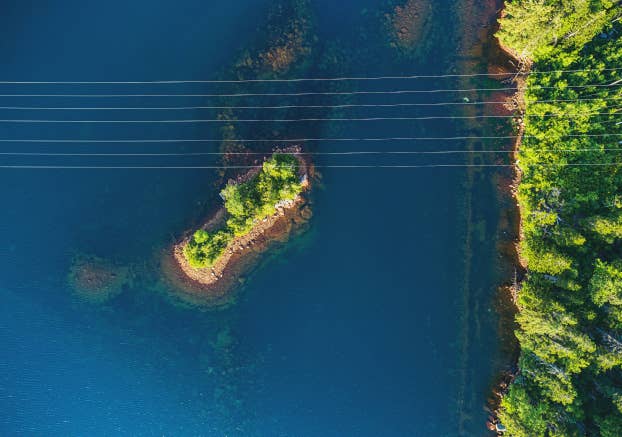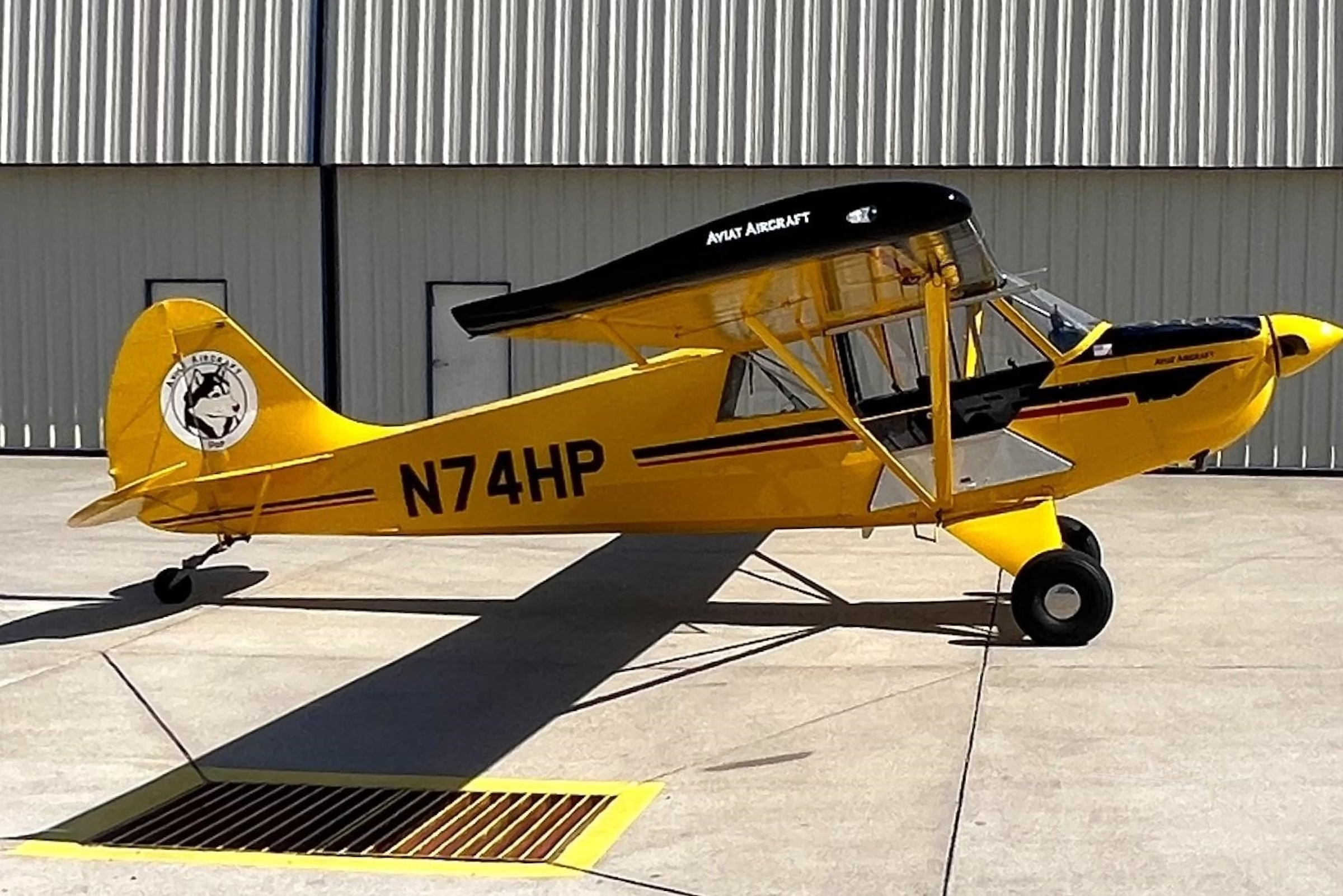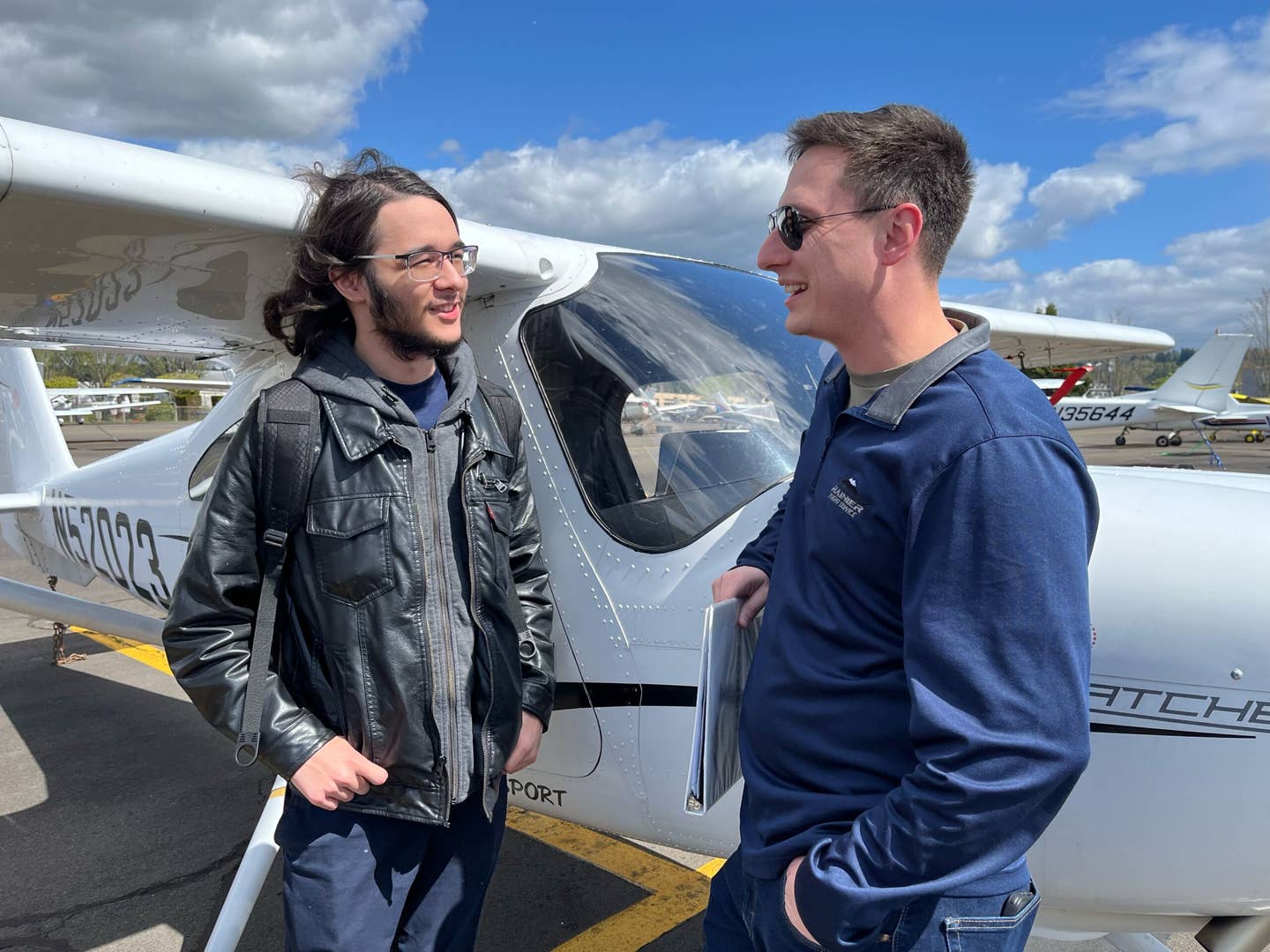Strange Airplane and Unfamiliar Environment Leads to Tragedy
For an expert pilot, this new toy did not turn out to be child’s play.

He was flying along a river toward a low sun that blinded him to the wires in his path. [Getty Images]
Lake Hickory, created by a dam on the Catawba River in North Carolina, is long and sinuous, oriented broadly east-west. Near its western end is Hickory Regional Airport (KHKY).
On a clear August day in 2023, a pilot, 63, and a passenger, 41, himself a student pilot, took off from KHKY in a Scoda Super Petrel LS, a two-seat amphibious light sport biplane manufactured in Brazil. They flew 5 miles northeast to a point where a highway bridge crosses Lake Hickory. There they turned left over the lake, made a touch-and-go landing, and then continued westward at low level.
If you're not already a subscriber, what are you waiting for? Subscribe today to get the issue as soon as it is released in either Print or Digital formats.
Subscribe NowHalfway back to the airport, at a bend in the lake, the little plane was seen to dive suddenly—but too late to avoid a collision with power lines. The transmission cables sliced through the fuselage at the base of the windscreen. There was a flash of high-tension electricity, resembling an explosion, and the airplane fell into the water. Both occupants died in the crash.
A friend of the pilot, who described him as very experienced and very capable, believed that the accident must have been caused by a medical or mechanical issue because the “pilot flew around the lake several times before and was familiar with it.”
The pilot’s logbook told a different story. A prosperous businessman, he owned a TBM (a single-engine turboprop), which he flew regularly. In October 2022, he logged 5.1 hours in the Super Petrel at Ormond Beach, Florida, where the U.S. distributor of the airplane is located. He then made a 2.4-hour flight to KHKY from Barnwell Regional Airport (KBNL) in South Carolina, where he evidently took delivery of the $350,000 amphibian.
He did not log another flight in the Super Petrel until May 2023, when he flew 0.9 hours. Three months then followed without a logbook entry for either airplane, a gap without parallel in the nearly two years of logbook pages found in the National Transportation Safety Board (NTSB) accident docket.
After the unexplained three-month pause, the pilot flew the TBM on August 9 and 11. The crash in the Super Petrel occurred on August 13.
The NTSB does not comment on the strange hiatus but credits the pilot with 3,000 hours total time and only 8.4 hours in the Super Petrel. If this tally is correct, it does not leave much time for exploration of the lake, which, if it took place at all, went unlogged. In fact, the strongest evidence that the pilot had not explored the lake, or at any rate the part of the lake where the transmission lines crossed it, was the collision itself.
For airplanes flying low over bodies of water to collide with power lines is not uncommon. I have written about two other instances in this column. One involved a pilot who had seen the power lines on an earlier flight but then became distracted and forgot about them. The other involved a daredevil who liked to do risky things and then brag about them. He was flying along a river toward a low sun that blinded him to the wires in his path.
A third instance involved a Super Petrel that struck wires over a river in Montana in October 2022. A second airplane, flying alongside the first, did not hit the wires and, in fact, never even saw them.
All these accidents have something in common: They occurred over rivers. True, Lake Hickory is a lake, but it looks more like a wide river. The thing about rivers, as opposed to lakes, is that power lines go around lakes, but they go across rivers.
- READ MORE: Nothing Short of a Fatal Mismatch
Large power transmission towers—ones over 200 feet tall—are charted. The ones crossing Lake Hickory, which are smaller, are not. Nor are they marked, as lines crossing canyons often are, by brightly colored balls.
The power company that owns the cables—and, incidentally, the entire lake—probably did not realize that the likelihood of an airplane flying over the lake at a height of a hundred feet was greater than zero. Somewhat ironically, the company’s website includes a long section on safety precautions, which include never flying kites or model planes in the vicinity of power lines. Real planes are not mentioned, but the same principle applies.
The wires are clearly visible, however, in Google Earth. It would have been easy for the pilot to scout the lake for obstacles online. Alternatively, he could have flown the length of the lake at a safe altitude before treating himself and his companion to the pleasure of cruising over it at a more intimate one.
There is a technical aspect of this accident that is worth mentioning, just as a matter of general information. With a given control effort, an airplane rises much more rapidly than it descends. It is therefore generally a better bet to go over a suddenly perceived obstacle than under it. The configuration of the Super Petrel, furthermore, with biplane wings stacked high above the cockpit, did not lend itself to going under anything.
The pilot, however, could hardly have weighed these considerations in the brief moment between seeing the wires and hitting them. There was barely time to react at all. By the time the pilot saw the wires, the opportunity to avoid the accident was already in the distant past.
There is a broader lesson here as well.
- READ MORE: A Cautionary Tale About Pilot Freelancing
The pilot had thousands of hours, was instrument rated, and flew his own turboprop. The small, slow, light amphibian would be fun and easy to fly, and it would open up a world of off-airport possibilities. But it would also bring with it a new set of hazards. In the Super Petrel, the pilot was not at FL 180 any more.
No matter how experienced we are, when we get into a strange airplane and fly in an unfamiliar environment, we’re novices again.
The word “pilot,” as it is colloquially used, subsumes everyone from the beginning student to the fighter ace and the 20,000-hour airline captain. People in general, and even pilots themselves, tend to assume that each level of experience and accomplishment incorporates all lower ones. Thus, people might think that a pilot who flies F-18s on a carrier will have no trouble in a Skyhawk. But that isn’t true.
Each type of flying, each airplane, each environment, holds its own secrets. Mastery of a higher type of piloting does not confer mastery of all lower ones, any more than knowing how to survive in the Alaskan bush will guarantee your safety in the New York subway.
No doubt the pilot’s checkout in the Super Petrel included warnings about wires, submerged trees, and bird strikes—all the hazards specific to flying on water. But it is one thing to be warned and another to be vigilant. Vigilance cannot be poured into us—it grows from the inside out.
Note: This article is based on the National Transportation Safety Board’s report of the accident and is intended to bring the issues raised to our readers’ attention. It is not intended to judge or reach any definitive conclusions about the ability or capacity of any person, living or dead, or any aircraft or accessory.
This column first appeared in the October Issue 951 of the FLYING print edition.

Sign-up for newsletters & special offers!
Get the latest FLYING stories & special offers delivered directly to your inbox







